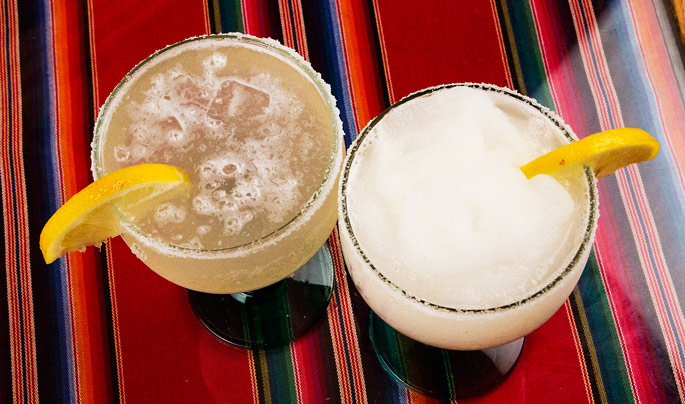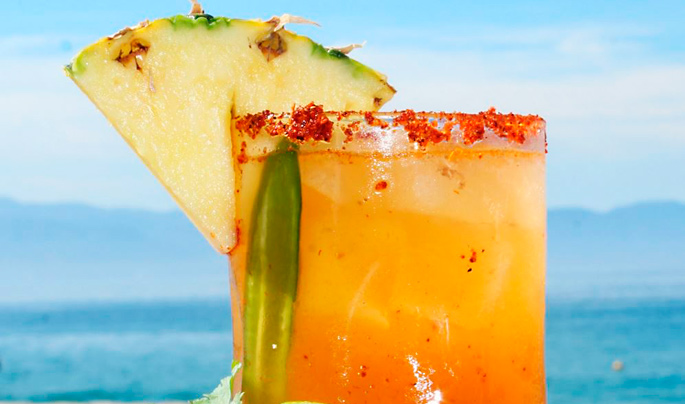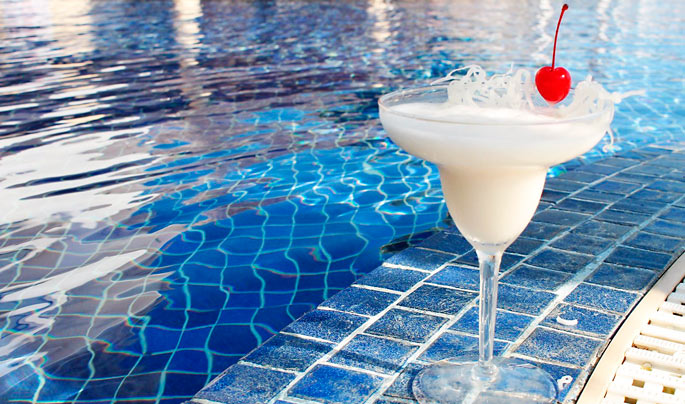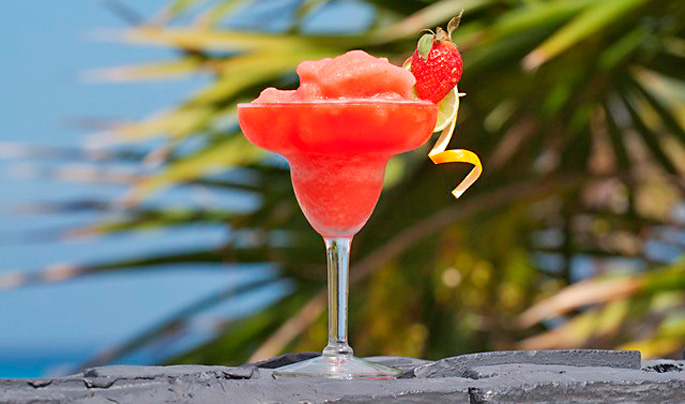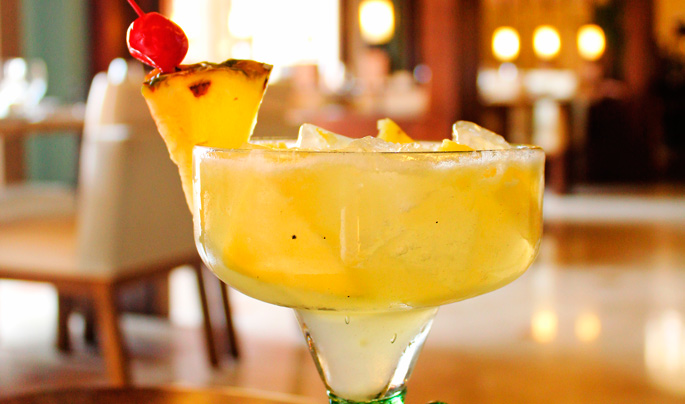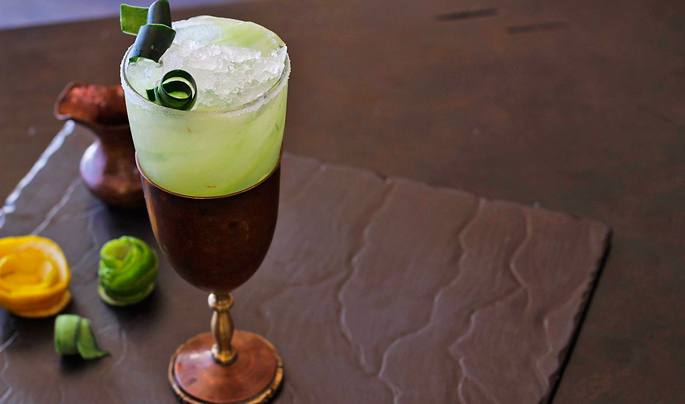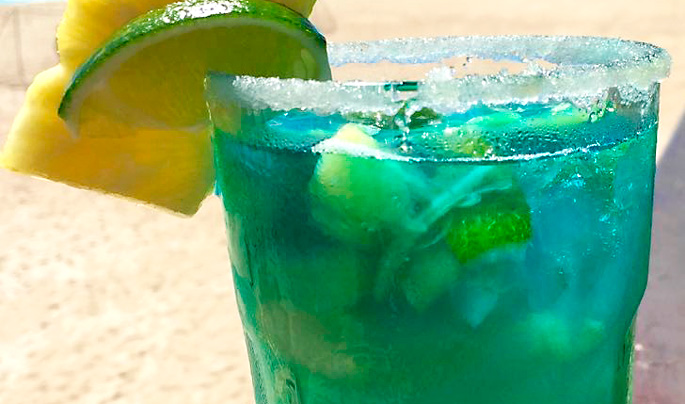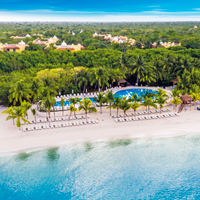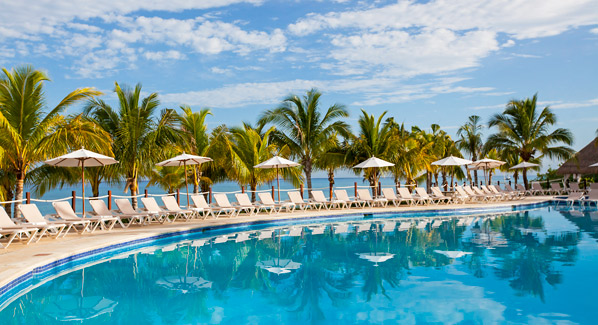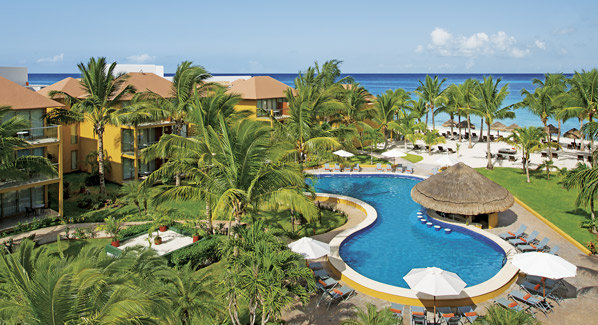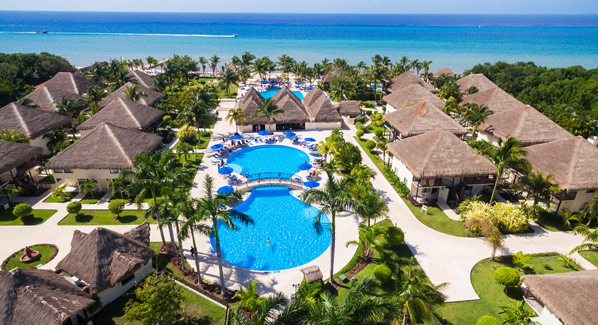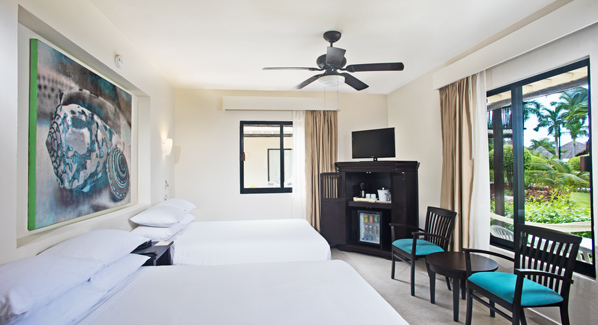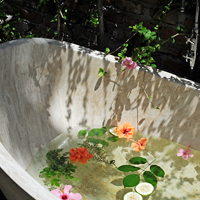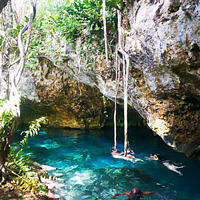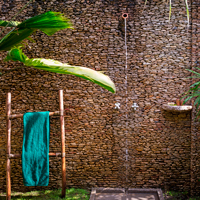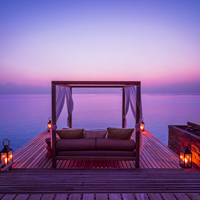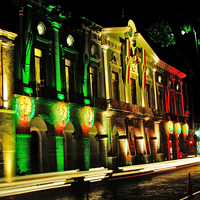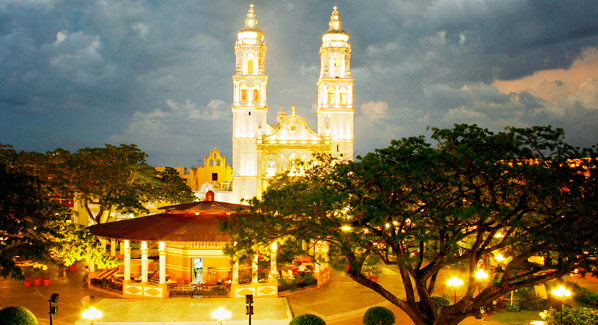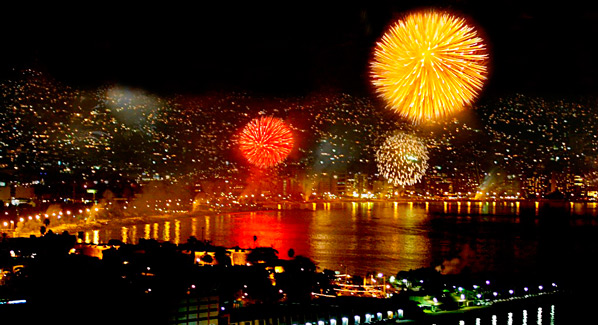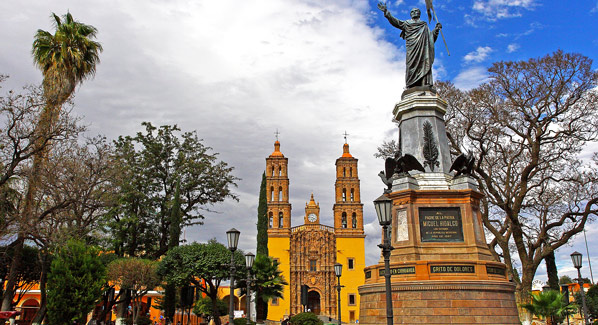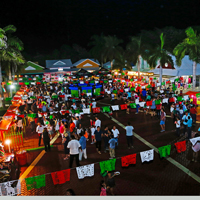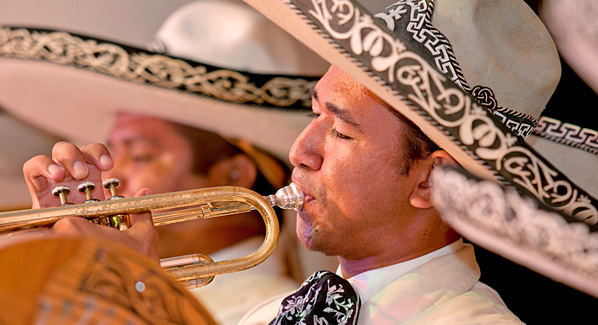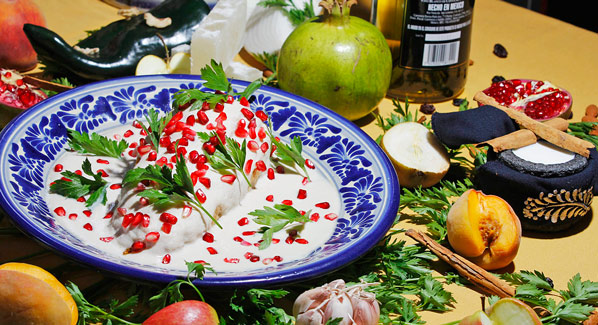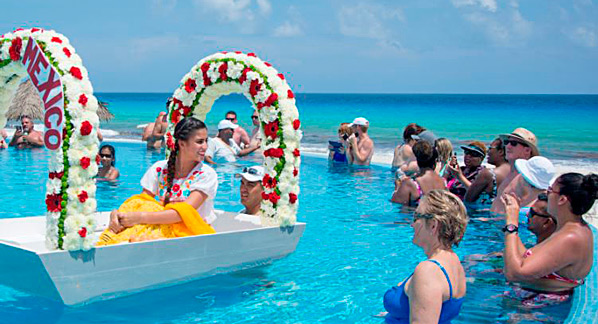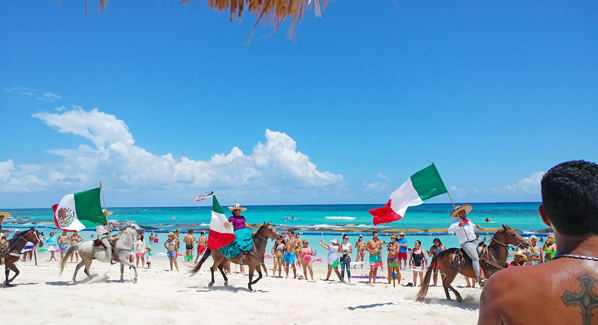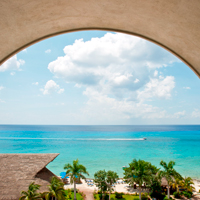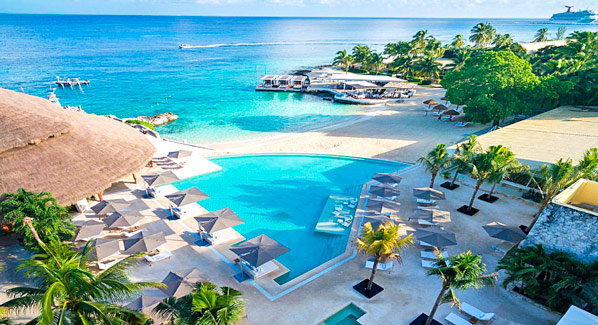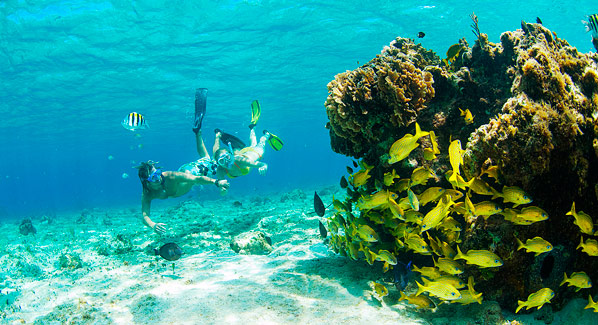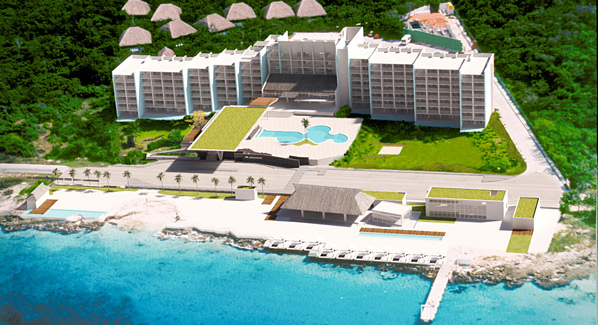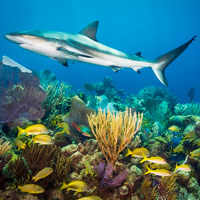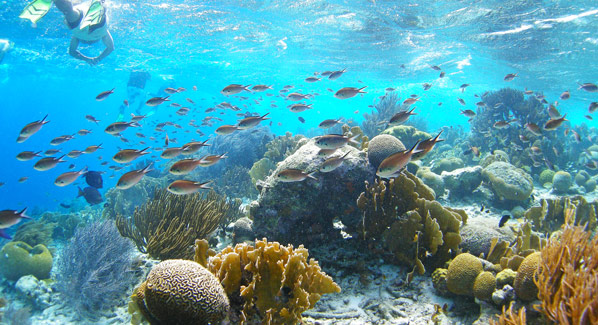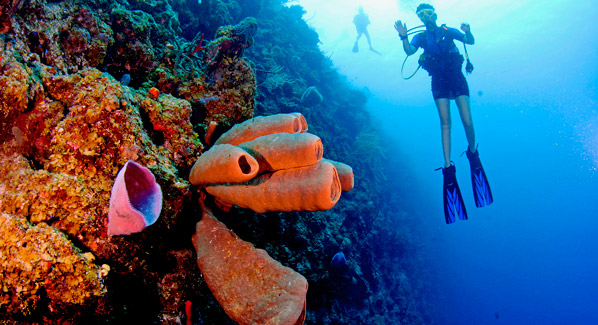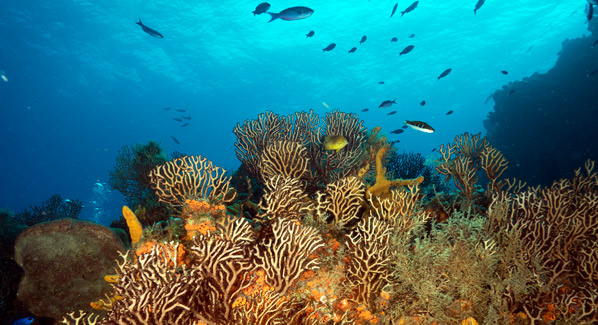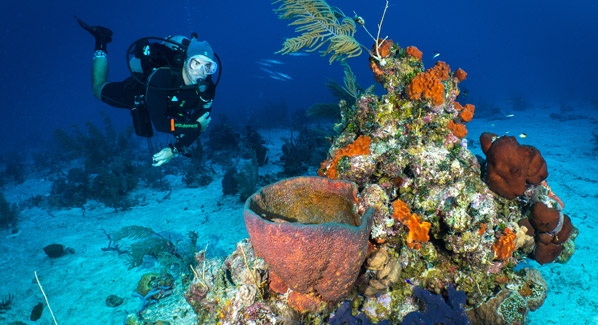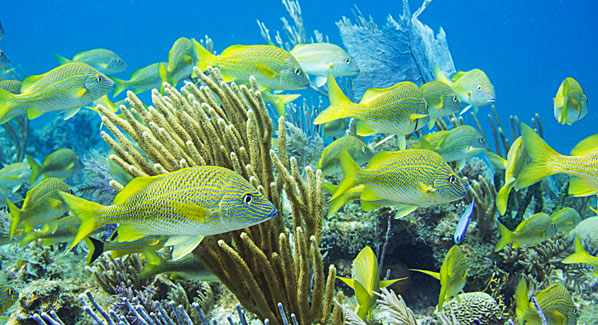Sun and sand; palm trees and margaritas; clubbing and spa time. These are the things that lure travelers to the resorts of Cancun and the Riviera Maya. But there’s much more to the region that is worthy of discovery, and for those who want to venture away from the beach and explore a wider swath of the Yucatan Peninsula, there are limitless opportunities to immerse oneself in the region’s deep-rooted culture and history. Moreover, this territory’s distinct beauty is so outstanding it’ll knock your socks…er flip-flops off! To get you started, here are five notable destinations that are an easy day or overnight trip away from Cancun and the resorts of the Riviera Maya
A Crossroads with Colonial Memories
Though it is the largest and most cosmopolitan city in the Yucatan, Mérida retains the eclectic charms of a Colonial era town. The narrow, cobblestone streets of the old town are lined with rows of multihued buildings, where horse-draw carriages share the roads with pedestrians. It is a town perfect for walking. Roadways intersect at thirteen lovely town squares, where lofty trees shade park benches, and historic monuments front Colonial cathedrals. Mérida has been named among the top places in the world to visit, and recognized as capital of culture for its lively music and cultural flamboyance.
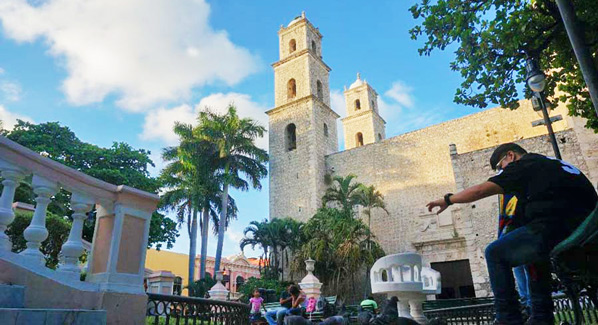
In the center of Mérida, the Church of the Third Order is home to a massive crucifix sculpture known as Cristo de la Unidad, by contemporary Spanish artist Ramón Lapayese del Río. Photo: Juanita Rodriguez
Be sure to visit the Mercado de Lucas de Galvez, which is a lively indoor/outdoor market place that bustles with merchants, selling everything from jewelry and shoes to honey and flowers. The Plaza Mayor is a vibrant meeting place where locals linger at sidewalk cafes to enjoy traditional drinks, such as champola or sorbet. The city’s most alluring avenue, Paseo de Montejo, is closed to traffic on Sunday so residents can enjoy live music and a popular artisan market.
Bright Waters and a Colorful Past
It’s called the Lagoon of Seven Colors. This natural freshwater lake is fed by underground rivers that flow from mysterious blue holes that mingle to create a captivating palette of Caribbean blues and greens. On the lake’s western shore, the town of Bacalar is a hidden gem of thatched roof cabanas and quaint bed and breakfast-style retreats, and it is a town with an intriguing history. Linked to the sea by canal and river, it was settled by the Conquistadores in the 1500s, and became the most important trading port in the southern Yucatan.
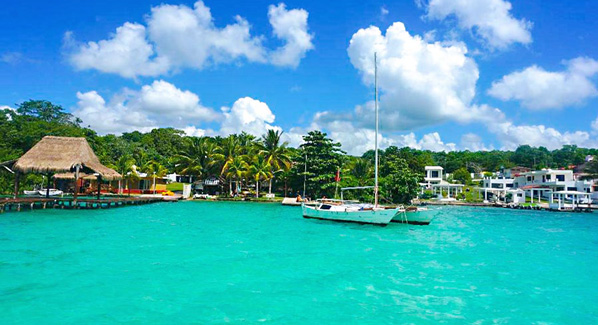
The flow from hundreds of underground springs fill the waters of Lake Bacalar with clear fresh water, which is lit in many shades of blue and turquoise from sunlight reflecting from the sand. Photo: Juanita Rodriguez
Pirates came to plunder, prompting the building of Fort of San Felipe. This stone fortress still commands the waterfront. Behind the stone ramparts are well-preserved cannons, while inside is an impressive mural and plaques displaying the area’s fascinating history. Arguably the most intriguing exhibit inside the museum is a glass tomb containing the skeleton of an alleged Pirate of the Caribbean! Bacalar is a four-hour drive south from the Cancun area, but well worth the trip.
The Magic Place
It’s not just a saying. Izamal is magic. That’s according to the Government of Mexico, which has honored a small number of unique and especially picturesque towns across the country with the title of Magic Towns. What makes a town magical? According to the requirements for consideration, it must be small, scenic and with rich historical tradition. So why Izamal? Just enter the town and that question will be answered. The first thing any visitor notices is that the town is painted yellow… all the colonial buildings, the market, the huge convent, everything! The next things that stand out are the cobblestone streets and the iron lampposts that give the town a unique ambiance.
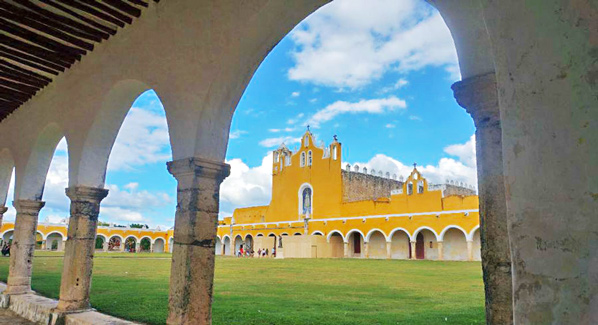
The San Antonio de Padua Convent at Izamal was built in 1561 by Spanish conquistadors and monks, using stones from a destroyed Mayan pyramid that previously occupied the site. Photo: Juanita Rodriguez
Called the City of Hills, Izamal may be the oldest city in Yucatán, dating back to the Classic Mayan period. Today the town is alive with three cultures – the ancient Maya, the colonial, and the present day bustling town. Izamal is a monument of color, history and pride that can be felt in its streets and buildings. Art, music, and gastronomy are all around you, and there is a lively town market. Among the locations not to be missed is the Government Palace, the Maya archaeological site of Kinich Kakmo, and the Franciscan convent built over the remains of a Maya pyramid. Izamal is a 45-minute drive from Mérida and a bit less than three hours from Cancun.
A Tropical Euphoria
Before Cancun and the Riviera Maya became an international resort destination, the coastlines of the Yucatan Peninsula were home to small, sleepy fishing villages. For a taste of the bucolic seaside charms of yesteryear, head to Holbox Island. Located 40 miles to the northwest of Cancun, and accessibly only by ferry, the island’s single beachfront town is a place of sand streets, eclectic eco lodges and pristine ocean views.
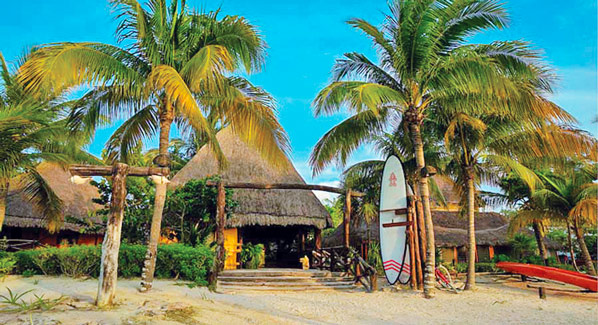
The thatch-roof bungalows of the Hotel Villas Delfines overlook a white sand beach on Isla Holbox. This eco-conscious property includes composting bathrooms and solar water heating. Photo: Juanita Rodriguez
The Caribbean Sea is the central attraction. The calm coastal waters are a favorite with paddle boarders, who come to explore the shoreline, or participate in SUP yoga sessions. Nature lovers head to the Yum Balam Biosphere to view flamingos, or snorkel with sea turtles and wild dolphins. From June through September, Holbox becomes the starting point for day trips to an offshore sand bank where massive yet harmless whale sharks gather to feed. Swimmers can don mask and snorkel for a life-list encounter with these gentle giants.
Heaven on the Water
You can only get there by boat. The sandbar known as El Cielo is a white sand shoal that lies about a half mile off the southwestern coast of Cozumel. A number of tour operators will provide the ride, and once there, passengers disembark to wade in the shallows, or swim in crystal clear waters. Stingrays are frequent visitors to the shoal, and the white sands are strewn with colorful starfish. It is the combination of these stellar-like creatures and the cerulean blue of the water that inspired the name El Cielo, which translated into a combination of the words “sky, heaven and paradise.”
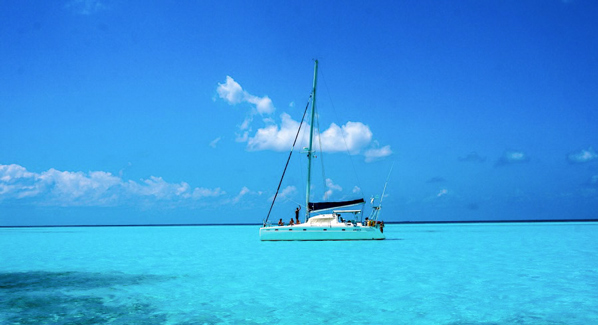
A sailing catamaran glides over the shallow sand bank known as El Cielo. This is a favorite destination for swimmers, who can wade in the shallows among tropical fish, stingrays and starfish. Photo: Juanita Rodriguez
For an added dimension, visitors can don a mask and snorkel and venture out to the edges of the bank, where colorful coral heads rise from the sand, then become a massive reef as depths increase. Two of the island’s most popular snorkeling destinations— Colombia and Palancar—are just a short boat ride away. Many tour operators combine a stop at El Cielo with a snorkeling excursion to one or both of these reefs, which are home to turtles and a wealth of colorful tropical fish.

